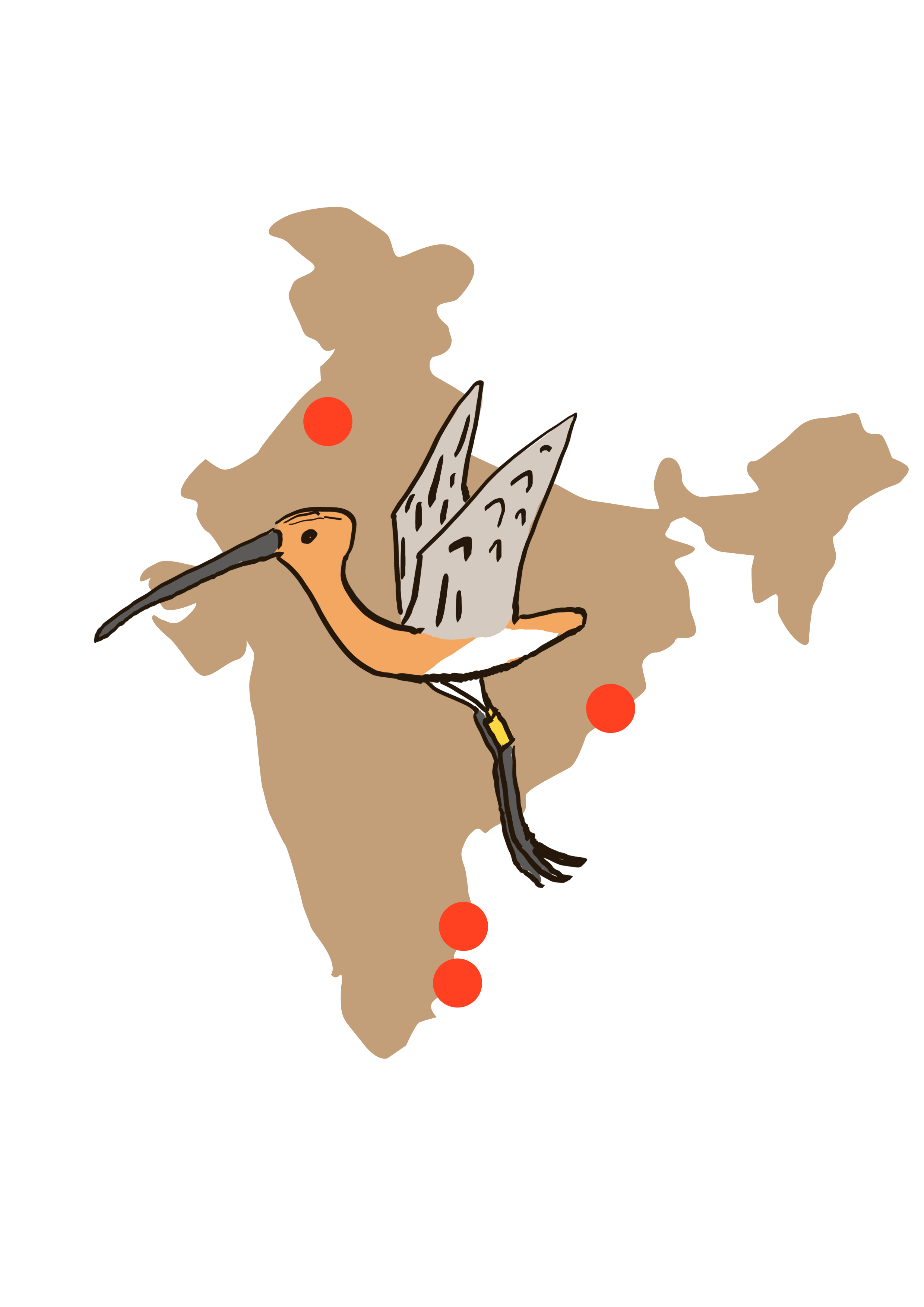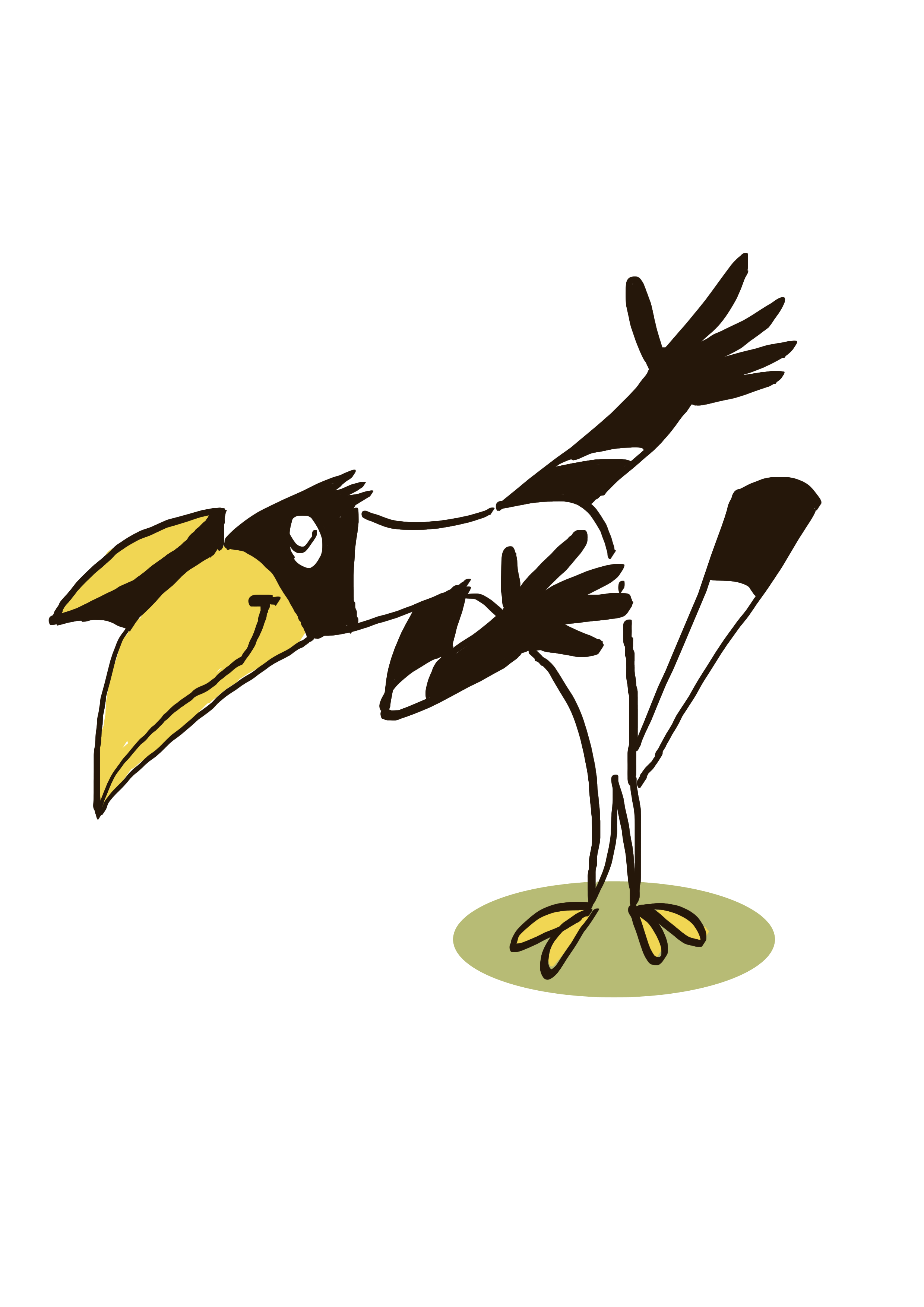-
1883

BNHS is born on 15 September with six Englishmen and two Indians meeting in Mumbai to share their natural history notes.
-
1883

E.H. Aitken, author of several natural history books, who contributed significantly to Society's bird collection, is the first Honorary Secretary.
-
1886

Gets a new home, visibility for next two decades; entrepreneur H.M. Phipson offers his premises at 6, Apollo Street.
-
1886

First issue of Journal of Bombay Natural History Society, Indian subcontinent's premier scientific peer-reviewed journal, is published.
-
1895

Pioneers scientific research on Indian snakes, led by Col. F. Wall.
-
1908

Book publication begins with the release of E.C. Stuart Baker's 'Indian Ducks and their Allies'.
-
1908

Honorary Secretary W.S. Millard propels amendments to proposed Wild Birds and Animals Protection Act. Gets herons and kingfishers protected (given the enormous demand for their breeding plumes for hats and attire).
-
1911-23

Launches Mammal Survey of india, Burma and Ceylon under Millard, helps progress of indian Systematic Mammology.
-
1921

Transfers natural history collection to Prince of Wales Museum, now Chhatrapati Shivaji Maharaj Vastu Sangrahalaya.
-
1923

Joins hands with Museum trustees to build Natural History Section; Salim Ali is its first guide lecturer.
-
1927

Bird migration studies commence with attempts to ring ducks, aided by Maharaja of Dhar.
-
1927

Begins nature education in Mumbai with nature walks and school Programmes.
-
1929

Takes up Vernay Scientific Survey, an ornithological expedition of Eastern Ghats, funded by American businessman Arthur Vernay.
-
1931-32

Initiates Hyderabad Ornithological Survey, followed by avifaunal surveys of Travancore and Cochin (1933), Central India (1938), Mysore (1939-40), Kutch (1943-44) and Gujarat (1944-48).
-
1933

Celebrates golden jubilee Launches a conservation movement in India with BNHS curator S.H. Prater's paper, 'Problems of Wildlife Protection in India'.
-
1938

Gets its logo; chooses William the Great Hornbill, BNHS' resident caged-bird from 1894-1920, and popularly knows as its 'office canary'.
-
1941

Salim Ali's The book of Indian Birds', an all-time favourite, is published.
-
1946

American ecologist Dillon Ripley and Salim Ali team up to study Indian birds. Mistnet is used for the first time; helps revise the known distributional range of many species.
-
1946-82

Ali-Ripley partnership results in 'Handbook of the Birds of India and Pakistan', still considered the Bible for Indian birds.
-
1947

Starts new leg post-Independence, under Salim Ali.
-
1948

S.H. Prater's 'The book of Indian Animals' is published; remains a landmark publication till date.
-
1948

Landmark bird survey in Gujarat sets pace for bird migration studies in the state.
-
1951

Honorary Secretary Humayun Abdulali plays an instrumental role in drafting Bombay Wild Animals and Wild Birds Protection Act 1951, basic source for Wildlife Protection Act 1972.
-
1956

Recognised by Bombay University to conduct MSc in field ornithology; soon recognition extended to PhD programme.
-
1958

Salim Ali gets Padma Bhushan.
-
1959

Rediscovers Finn's Baya after 58 years. First sighted by A.O. Hume in 1866 and breeding plumage of male first described by Frank Finn in 1901, after which there were no records.
-
1960

Long-drawn campaigns led to declaration of Mumbai's Borivali forest as national park (1968), and Karnala (1968) and Madhmeshwar (1984) as bird sanctuaries.
-
1961

Rediscovers Wroughton's Free-tailed Bat, first collected by Prater during 1912 mammal survey in Barapede Caves, Goa.
-
1963-77

Bird surveys in Andaman & Nicobar led by Humayun Abdulali throw new light on the fauna of the islands, especially birds.
-
1965

Gets new premises in Fort on 13 March; names it after its mascot, the Great Hornbill.
-
1967-73

Resumes bird ringing project, started in 1959, this time under Migratory Animal Pathological Surveys at Chilika (Odisha), Bharatpur (Rajasthan) and Point Calimere (Tamil Nadu).
-
1971

Campaigns for Kerala's Silent Valley to be declared a sanctuary- a proposed dam was threatening its survival.
-
1972

Society's collaborative study on Gir's lions paves way for further ecological field studies.
-
1973

Estuarine Crocodile Survey in Bhitarkanika, Odisha, locates largest breeding site of Olive Ridley Turtles along Indian coast.
-
1975

J. Paul Getty Wildlife Conservation Award for Salim Ali; he uses it to form Salim Ali Nature Conservation Fund.
-
1976

Launches Hornbill, an illustrated magazine to bring natural history and conservation stories to BNHS members.
-
1976

Salim Ali honoured with Padma Vibhushan.
-
1979-86

Avifauna movement and population studies across India lead to declaration of Great Vedaranyam Swamp in Tamil Nadu and Harike Lake in Punjab as sanctuaries, and Chilika Lake as Ramsar site.
-
1980-87

Sets up hydrobiological station in Keoladeo National Park; contributes to ecological knowledge of tropical human-enhanced wetland system.
-
1981-87

Great Indian Bustard study rolls out conservation plans for the species and grassland fauna of the plains.
-
1983

Salim Ali is first recipient of Indian Board for Wildlife's 'National Award for Wildlife Conservation'.
-
1983

Prime Minister Indira Gandhi attends BNHS Centenary function; releases Centenary Postage Stamp designed by J.P. Irani, foremost Indian bird artist and illustator of Scociety's publications.
-
1983

Get government land for Conservation Education Center(CEC) in Mumbai
-
1983-92

Pioneers studies on Asian Elephant in Mudumalai Wildlife Sanctuary and adjoining areas;first study in India on ratio collared elephants
-
1984-89

Grate Indian Bustard study exposes fragile status of Bengal and Lesser Florican;begins conservation plans for the two bustard species
-
1985

Indian government bans export of frog legs after sustained efforts by Humayun Abdulali
-
1985

Nannaj include in Great Indian Bustard Sanctuary, based on BNHS recommendation
-
1986

Rediscovers Jerdon's Courser near Kadapa in Andhra Pradesh, last recorded in 1900 from eastern India.
-
1986

Resumes work on Black-necked Crane in Ladakh, a follow-up of 1976 and 1983 studies.
-
1986-91

Takes up bird migration project in Point Calimere,Sriharikota Island and Pulikat,Harike and Chilika Lakes;rsults in Indian Bird Rining Manual and standardised bird ringing system.
-
1987

First recipient of Indian Government's Indira Gandhi Paryavan Puraskar for nature conservation
-
1988

Rollapadu in Andhra Pradesh declared Grate Indian Bustard Sanctuary on BNHS' recommendation.
-
1989

Recognised by SIRO as scientific and research organisation.
-
1990-94

Birds of Prey status of resident raptors, discovers largest roost of three wintering harrier species in Velavadar National Park, Gujarat and adds Gery-faced Buzzard to Indian checklist
-
1990

Set up BNHS Armed Forces Cell to work with defence forces of India
-
1991

Gets United Nations Environment Programme's Global 500 Award for nature conservation
-
1991-95

Takes up grassland ecology study of Indian plains with specific reference to their endangered fauna
-
1993

Plays important role in extending Maharashtra's Phansad Sanctuary for Indian Giant Squirrel
-
1993

Rediscovers Salim Ali's Fruit Bat at Kardana Coffee Estate in High Wavy Mountains, Tamil Nadu
-
1996-99

Takes up Western Ghats hill streams ecology study, with special reference to fishes
-
1996

Sets up Salim Ali International Award for Ornithology and Nature Conservation; former BNHS Honorary Secretary Zafer Futtehally is first recipient
-
1997

Indira Gandhi Paryavan Puraskar J.C Daniel, former BNHS director.
-
1997

Seeks government permission to study effects of environmental contamination on birds of prey; begins Vulture Conservation Project.
-
1998

Gets Important Bird Areas (IBA) cell to identify key biodiversity conservation sites, with birds as indicators. Nominated BirdLife International's partner designate in India.
-
2000

Launches Marine Conservation Programme.
-
2001

Sets up vulture care facility in Pinjore, Haryana, followed by 3 more centres in West Bengal, Assam and Madhya Pradesh, and a breeding facility in Pinjore.
-
2001-08

Begins surveys on Spot-billed Pelican and waterbirds of Pulicat Lake; former survey significantly revises population estimates of the species.
-
2001

Critically Endangered Forest Owlet study in Maharashtra and Madhya Pradesh helps establish status, distribution, ecology and behaviour of the species.
-
2002

Begins bird community study in Palni Hills, waterbird monitoring in Chilika Lake. Bird atlas of Chilika is published.
-
2002

Recipient of Rajiv Gandhi Wildlife Conservation Award (Institution category).
-
2003

Spearheads sustained campaign against threats facing Tungareshwar Reserve Forest, Maharashtra.
-
2003

BirdLife International Award for BNHS scientist and then Director Asad R. Rahmani for his research and conservation initiatives in India.
-
2003

BNHS Green Governance Programme involves industry heads; biodiversity conservation is made part of Corporate Social Responsibility.
-
2004

Launches Satpuda Landscape Tiger Programme; takes up large-scale conservation through education and community initiatives.
-
2004

Begins Giant Clam and coral reef conservation programme in Lakshadweep.
-
2005-12

Takes up study of Asian Elephant population, distribution, habitat and conservation problems in Koundinya Wildlife Sanctuary, Andhra Pradesh; extends study along southern Eastern Ghats including Andhra, Tamil Nadu and Karnataka.
-
2005

Starts a Conservation Education Centre at Asola Bhatti Wildlife Sanctuary, Delhi,
-
2006

Study on fatal effect of diclofenac on Gyps vultures leads to ban on the drug for veterinary use.
-
2006

Takes up Avian Influenza Surveillance in Chilika; extends project to different wetlands in india.
-
2006

Flamingo festival first celebrated as part of wildlife week; draws attention to flamingos in Sewri Bay.
-
2007

Sets up bird migration centre in Point Calimere; launches Project Mangrove to conserve mangrove habitats.
-
2007

Haryana Government's Conservation and Protection of Wildlife Award for BNHS scientist Vibhu Prakash in recongnition of his vulture conservation work.
-
2008

Completes 125 years in nature conservation; nominated BirdLife International partner for India.
-
2008

Whitley Conservation Award for BNHS scientist Deepak Apte in recognition of his work in Marine Protected Areas of Lakshadweep.
-
2009-10

Productive years with regard to molluscan study; establishes 100 new Opisthobranch records for India.
-
2010

Starts marine biodiversity conservation centre in Ratnagiri.
-
2011-12

Identified nodal centre for CBD (Convention on Biological Diversity) - NGO alliance; plays important role in facilitating civil society organisations' inputs to Conference of the Parties-11 process.
-
2013

Starts a Conservation Education Centre in Nagpur, on Raj Bhavan premises.
-
2014

Discovers 9 species of bush frogs in Western Ghats; 2 new populations of Critically Endangered Kondana Rat in Maharashtra.
-
2014

Sanctuary Green Teacher Award for BNHS naturalist Isaac Kehimkar for creating interest in nature, especially butterflies.
-
2015
